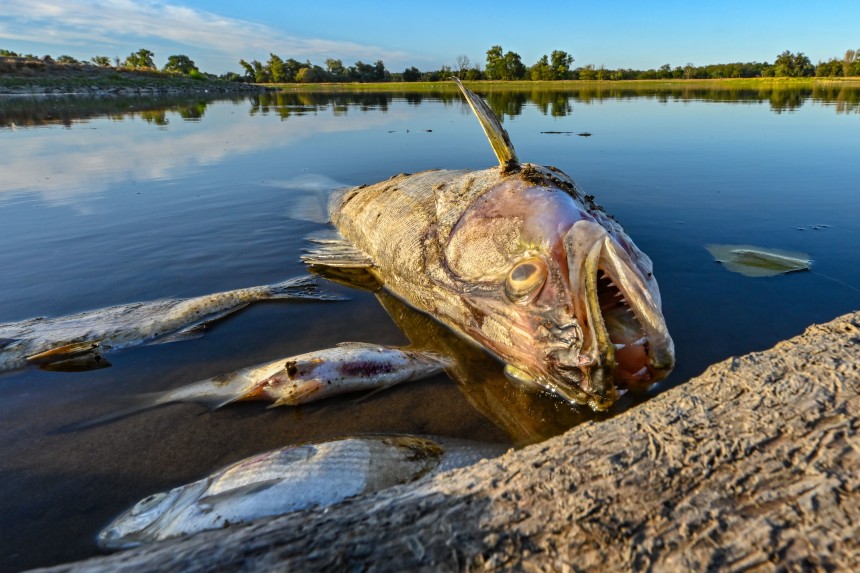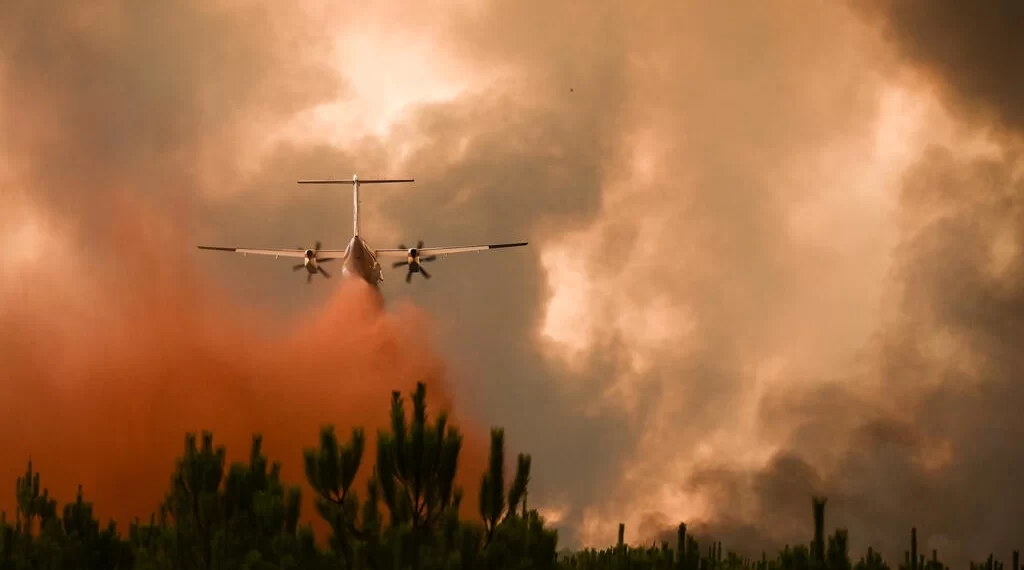Blazes that have torched tens of thousands of hectares of forest in France, Spain and Portugal have made 2022 a record year for wildfire activity in southwestern Europe, the EU’s satellite monitoring service stated today, Friday, August 12, 2022.
Amid a prolonged heatwave that saw temperature records tumble, the Copernicus Atmosphere Monitoring Service (CAMS) disclosed that France had in the last three months, reached the highest levels of carbon pollution from wildfires since records began in 2003.
It followed Spain that registered its highest ever wildfire carbon emissions last month.
CAMS stated that the daily total fire radiative power – a measure of the blazes’ intensity – in France, Spain and Portugal in July and August was “significantly higher” than average.
The service warned that a large proportion of western Europe is now in “extreme fire danger” with some areas of “very extreme fire danger”.
“We have been monitoring an increase in the number and resulting emissions of wildfires as heatwave conditions have exacerbated fires in southwestern France and the Iberian Peninsula.
“The very extreme fire danger ratings that have been forecasted for large areas of southern Europe mean that the scale and intensity of any fires can be greatly increased, and this is what we have been observing in our emissions estimates and the impacts it has on local air quality”.
Mark Parrington, CAMS senior scientist.
Ravaging fires in France
CAMS released satellite imagery showing a plume of smoke in southwestern France extending hundreds of kilometres over the Atlantic.
France has received help battling the latest blaze in the form of 361 firefighters from European neighbours including Germany, Poland, Austria and Romania.
Already, some 10,000 people have been evacuated from areas near the forest fires still raging in the Gironde region in western France. More than 26 square miles of pine forest have burned since Tuesday, with at least 16 houses destroyed amid the worst French drought in recorded history.
Globally, 2022 is currently the fourth highest year in terms of wildfire carbon, CAMS stated.
Scientists say heatwaves such as the exceptional hot and dry spell over western Europe are made significantly more likely to occur due to manmade climate change.
Europe suffers as heat waves drive forest fires and dry rivers
Almost half of Europe is experiencing a historic drought. Europe’s heat waves and historic drought are threatening new ecological and economic pain for a continent already grappling with the effects of Russia’s war in Ukraine.
While nations across Europe sent teams of firefighters to tackle a “monster” wildfire in France, the crucial Rhine in Germany was threatening to fall so low that it could become difficult to transport vital goods on the river. Britain is also sweltering through its latest “extreme heat” spell.

Temperatures have once again approached 100 degrees Fahrenheit in the United Kingdom and France this week. A drought was officially declared early Friday, August 12, 2022 in several parts of England, leaving millions facing restrictions on the use of water — much of its famously “green and pleasant” countryside has already gone brown.
Some parts of western, central and southern Europe have gone without rainfall for almost two months, leaving almost half the continent facing drought in a cycle of hot weather experts say is a direct result of climate change.
Ed Hawkins, a professor of climate science at Reading University in southeast England, told reporters: “In the U.K., we’ve had a nine-month period of extremely light rainfall — that’s a very long time to go without rain, even in our unpredictable climate”.
“We can now expect to see drier summers and lack of rainfall mirroring southern Europe in the U.K., although southern Europe is going to get hotter as well”.
Ed Hawkins
READ ALSO: African Development Bank Wins ‘Salute to Excellence’ Award























